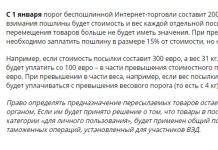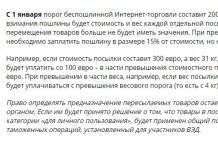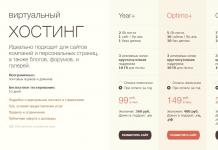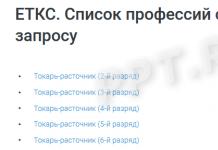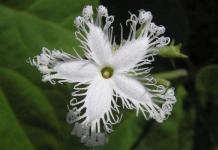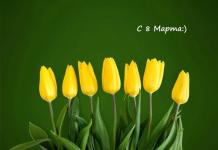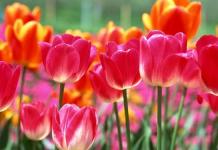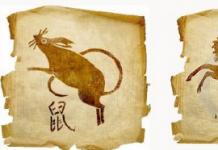What garden plot is complete without daisies? White, yellow, red flowers of anthemis, so similar to field chamomile, cannot but win the gardener's heart. Decorating a plot with them is not at all difficult - a sunny, bright and unpretentious plant is very easy to grow and does not require complex care.
Solar joy of the gardener
Anthemis(Anthemis), also known as the navel, belongs to the Asteraceae family and has up to 200 species in its genus.
In vivo grows in the Mediterranean, from where it spread to Europe and Asia. Almost all plant species are perennials.
Anthemis is a spreading bush with beautiful pinnately dissected leaves. Its height ranges from 10 cm to 1 m.
Inflorescence consists of small middle flowers of bright yellow, orange or golden color and reed marginal flowers of yellow, pink, red, lilac or white color.
Due to this form of inflorescences, anthemis is often confused with chamomile. It is worth saying that the flowers of the plant have a light pleasant aroma.
Anthemis very popular with flower growers. It is unpretentious, drought-resistant, grows well in bright open areas of the garden. Sunny Anthemis flowers are impossible to miss among other plants. They add a bright joyful touch to the whole garden.
In culture, the most popular are the following plant species:
 Anthemis dyeing, or yellow-colored umbilical, Anthemis tinctoria - the most common species with a powerful root system. Can reach 1 m in height. Differs in plentiful and long flowering throughout the summer.
Anthemis dyeing, or yellow-colored umbilical, Anthemis tinctoria - the most common species with a powerful root system. Can reach 1 m in height. Differs in plentiful and long flowering throughout the summer.
Anthemis of Bieberstein, or Bieberstein's navel, Anthemis biebersteiniana is a perennial with a height of no more than 25 cm. The leaves are silver-gray, and the flowers are golden yellow.
 Antemis mountain, or mountain umbilical, Anthemis montana - perennial with silvery leaves up to 30 cm tall. The inflorescences look like a white chamomile with a large yellow center. Begins to bloom in August.
Antemis mountain, or mountain umbilical, Anthemis montana - perennial with silvery leaves up to 30 cm tall. The inflorescences look like a white chamomile with a large yellow center. Begins to bloom in August.
Antemis Trenchel, or Trenchel's navel, Anthemis tranzscheliana is a perennial up to 60 cm high with needle-like leaves of a bluish hue. The inflorescences look like a field white chamomile. It begins to bloom profusely in May.
Anthemis noble, or Roman chamomile, or in Latin Anthemis nobilis - a low-growing perennial with a height of no more than 20 cm with white inflorescences. It has an interesting variety "Flore Pieno" with spectacular terry "daisies".
Growing anthemis
Umbilical cultivation- this is a very simple process that even the most inexperienced grower can handle. This plant is a big sun lover. For abundant and long flowering, antemis requires a sunny and well-ventilated place.
Suitable for any plant cultivated soil. But it must be well drained, as the antemis does not tolerate stagnant moisture in the soil.
Landing
Umbilical planting carried out before winter using freshly harvested or purchased seeds immediately into open ground or in the spring through seedlings. Toothed achenes of the plant have excellent germination. During spring planting in April, seeds are sown in a peat-sand mixture, cover the container with it with glass and place it in a warm, shaded place.
After sprouts will appear, it is advisable to place the seedlings on a bright windowsill. Seedlings are planted in open ground in May. The distance between the bushes should be about 20-30 cm.
Anthemis Care
 The hallmark of the plant is drought tolerance. Water the umbilical cord only in dry weather. So that the plant does not suffer from an excess of moisture in the soil, it is recommended to loosen the ground around the bushes more often after watering or rain.
The hallmark of the plant is drought tolerance. Water the umbilical cord only in dry weather. So that the plant does not suffer from an excess of moisture in the soil, it is recommended to loosen the ground around the bushes more often after watering or rain.
In frequent feeding anthemis is not needed. It is enough to apply organic fertilizer to the soil once when planting.
Plant perfectly tolerates spring or autumn transplantation, so its bushes can be transplanted annually, changing the composition of the flower garden at your discretion.
Anthemis does not require shelter for the winter, as it is a cold-resistant and very hardy plant.
After a wave of flowering navel needs in strong pruning shoots. This procedure promotes the growth of new stems and can provoke re-blooming.
After trimming anthemis begins to bush better, becoming even more magnificent and decorative.
reproduction
In addition to the seed method, antemis is very breeds well dividing the bush. In autumn, delenki of adult plants are transplanted into prepared pits, on the bottom of which soil mixed with organic fertilizer. Until the planted bush takes root, it is regularly watered.
Antemis capable actively grow by self-seeding. By cutting off faded inflorescences, you can control this process, otherwise the plant will go beyond the flower garden and may even crowd out its neighbors.
Pests and diseases
 Chamomile rarely exposed pest attack. However, slugs and snails like to feast on its leaves. Infusions of mustard, hot pepper or garlic help to fight these uninvited guests.
Chamomile rarely exposed pest attack. However, slugs and snails like to feast on its leaves. Infusions of mustard, hot pepper or garlic help to fight these uninvited guests.
From excess moisture The plant's roots may rot. In this case, you need to dig up a bush, separate the affected parts, treat the roots of the plant with a fungicide and transplant it to a new place.
Sometimes in a flowerbed with anthemis you can see how the bushes of the plant disintegrate, and the flowers begin to shrink. This is the natural aging of the umbilicus. It is necessary to rejuvenate it by dividing the bushes and planting them in a new place.
Beneficial features
Chamomile, like pharmacy chamomile, is used in skin care of any type. Infusion, mask or bath with dry herbs gives an amazing effect - the skin is moisturized, gets rid of irritation, and small wounds heal.
Anthemis, which contains essential oils and flavonoids, soothes nervous system, improves sleep and eliminates migraines. Also, the plant has bactericidal, analgesic, antiallergic, antipyretic and antifungal properties.
As we see, anthemis- this is just the perfect plant for lovers of daisies. Being unpretentious and very hardy, this flower "grows like a weed." It is enough to plant an anthemis in the garden once - and for many years you will be pleased with bright and cheerful daisies under the window.
And for those who like to know more, we suggest that you watch the video about antemis
Received an order consisting of a delphinium and two phloxes. All plants with a well-developed root system and whole, healthy shoots. I have been ordering plants from this store for three years and always...
Received an order consisting of a delphinium and two phloxes. All plants with a well-developed root system and whole, healthy shoots. I have been ordering plants in this store for three years and everything is always of good quality.
Thanks. The order is carefully checked, all the roots and young seedlings are in a decent living condition, packed very securely. Thank you very much for the attention and qualification of your employees!
The packaging is excellent. Rooted, alive and healthy. Everything is signed. Already planted in pots. Thank you for ordering for the first time, I am very pleased with the decency and responsibility of the Podvorie company. My roses have already issued a leaflet...
The packaging is excellent. Root is alive and healthy. Everything is signed. Already planted in pots. Thank you for ordering for the first time, I am very happy with the decency and responsibility of the Podvorye company. My roses have already released leaves for a permanent place. I will plant them at the end of April.
I ordered Kermek broadleaf in a container in the amount of 4 pcs. The parcel came very quickly, the planting material is of excellent quality, all neatly shifted and fastened with paper clips to avoid flopping...
I ordered Kermek broadleaf in a container in the amount of 4 pcs. The parcel came very quickly, the planting material is of excellent quality, everything is carefully shifted and fastened with paper clips to avoid floundering in the box. Thanks.
Impressions, as always, are only positive, thank you very much for the excellent product and the right attitude towards customers, I wish all the employees of the Podvorye good health, kindness, positive and prosperity!
Thanks. Everything is great, as always!
Primula Kiffi, which I ordered, turned out to be in excellent condition. There were several points of growth, that is, it is already a large bush.
I already wrote a review, I'm sending the file. it is strange that the package arrived quickly, so they saw what kind of bulbs they put. So what do you do now? Just throw it away, and I have sprouted 8 pieces. I'm unlikely to...
I already wrote a review, I'm sending the file. it is strange that the package arrived quickly, so they saw what kind of bulbs they put. So what do you do now? Just throw it away, and I have sprouted 8 pieces. I probably won't be ordering more.
I received an order yesterday - two hydrangea seedlings. Plants, as usual, are excellent, there are no questions about the quality of planting material. But, the delivery of orders is poorly organized. The City Hall is doing its best...
I received an order yesterday - two hydrangea seedlings. Plants, as usual, are excellent, there are no questions about the quality of planting material. But, the delivery of orders is poorly organized. Now the mayor's office is doing everything possible to prevent the spread of coronavirus in our country on the same scale as in Italy. We all have to help this, and in the store there is a huge line for issuing an order, everyone is in a small room. Maybe temporarily it is worth organizing the issuance on the street? I think this could reduce the likelihood of the disease. You can treat conversations about the epidemic and coronavirus differently, but you need to think about your customers in any case, especially since many of them are older women, and yesterday it was very exciting for some to stand in this line.
Thanks to the Compound for my order. Everything is excellent. Let's see how perennials take root in packages.
The name "chamomile" came into Russian from the Polish language. As early as the sixteenth century, the Poles described the plant as a "romano flower".
Daisies: varieties and cultivation
The people call daisies several plants from the Asteraceae family, which have white petals - popovnik, pyrethrum, trihrebernik, etc. In European countries, it is cultivated Anthemis nobilis, or noble navel. According to its medicinal properties, it is close to pharmacy chamomile. As an ornamental plant, a variety with double inflorescences is grown. Reproduction is carried out vegetatively, since seeds are not formed in terry inflorescences.
Pyrethrum
Perennial herbaceous plant from the Asteraceae family. Height 5-150 cm. Two types are cultivated:
- Feverfew pink, otherwise Persian chamomile. Height 20-60 cm. The leaves are simply pinnately dissected. Marginal flowers are pink.
- Feverfew red is called Caucasian chamomile. Unlike the Persian chamomile, it has double-pinnate leaves. Marginal flowers are pink or red.
Growing conditions
Both types of chamomile grow wild in the mountainous regions of the Caucasus. These are perennial sun-loving plants, but they also put up with partial shade. Resistant to cold and tolerate frosts down to -5 degrees. They grow well on various soils, except for sandy and flooded soils. The greatest decorative effect is achieved when grown on loose fertile soils, forming large bushes with luxurious bouquets of inflorescences. Caring for mature plants is not burdensome. This is timely watering, easy loosening of the soil under the bushes, top dressing if necessary. Caucasian chamomile tolerates temporary drought conditions, but the growing season is shortened. On fertile soils with sufficient moisture, a second flowering is observed at the end of summer.
reproduction
Feverfew is propagated both by dividing an adult bush and by sowing seeds. Sowing is best done in the fall before winter. Seeds will undergo stratification in natural conditions and friendly shoots will appear in the spring. If autumn sowing is not possible, for example, due to the acquisition of seeds in winter, artificial stratification can be carried out and then sown at room conditions for seedlings. During the first summer, young pyrethrum plants will grow a rosette of basal leaves, and flowering will occur in the second year of life in July.
Note
Both types of feverfew are insecticidal and poisonous to insects. They are harmless to humans and warm-blooded animals.
Nivyanik, or popovnik
It is often called garden chamomile.
Growing conditions
Perennial rhizomatous plant. Prefers sunny places. When shading, weakening of the plant and poor flowering are observed. Needs fertile soil. Winter hardiness is high.
reproduction
When growing any varieties of garden chamomile, after three years, the bush thickens with weak shoots along the perimeter, and the shoots die off in the middle part of the bush. Inflorescences shrink and lose their decorative effect. To rejuvenate plantings, it is required to plant bushes every three years, using young sprouts with roots as planting material. The best time to transplant garden daisies is September, but more are acceptable. late dates. It is also possible to plant daisies in the spring. With seed propagation, garden chamomile is sown both in autumn and in spring. Flowering of plants obtained from seeds occurs from the second year of life.
Varieties
Breeders have created many varieties of garden chamomile, which differ from each other both in the size of the bush, the diameter of the inflorescences, and the number of petal flowers in the inflorescence. There are varieties with terry and semi-double inflorescences. The Nivnyak variety is the most popular among gardeners. (Leucanthemum maximum), having a meter-high bush and a diameter of 13-15 cm inflorescences. Flowering from July to September. There are also undersized 10-15 cm garden daisies (Leucanthemum aipinum) which are great for rock gardens.
Sin .: anthemis, noble umbilical (Italian chamomile, Roman chamomile, field chamomile, field umbilical, blush, noble chamomile), dyeing umbilical (bodka, yellow-colored umbilical, anthemis dyed, yellow marigolds, wolf's eye, bull's eye or bull's eye, yellow flower , jaundice, zhovtilo, yellow flowers, kupavka, yellow chamomile, boron chamomile, wild mountain ash, field saffron, blossom).
Representatives of the genus Pupavka are perennial and annual plants with a powerful rhizome, short hairy stems up to 20-75 cm in height, depending on the species, pinnately dissected leaves and white, rarely yellow, inflorescence baskets. Some types of umbilicus are decorative, have medicinal value, and are successfully used for the prevention and treatment of many diseases.
Ask the experts
In medicine
Some species of the genus Pupavka have medicinal value and have many useful properties. So, noble umbilical cord (Chamaemtlum nobile) is used in folk medicine and homeopathy almost on a par with chamomile. Pharmacists believe that noble umbilicus has medicinal properties similar to chamomile.
The dye umbilical (Anthemis tinctoria) has insecticidal and bactericidal properties. In folk medicine, its diuretic, antihelminthic, antimalarial, choleretic, diaphoretic, hemostatic effect is known. Residents of some regions of Russia use a decoction of plant flowers as an anti-inflammatory and expectorant for colds.
The essential oil of noble navel (Oil of Roman Chamomile) has antispasmodic and anti-inflammatory effects. In folk medicine, it is used for the following symptoms and conditions: insomnia, nervousness and increased anxiety, including menopause; with herpes zoster, neurodermatitis, dermatosis, eczema, psoriasis, flatulence, dyspepsia, colitis, anorexia, dysmenorrhea, menstrual pain.
There is information about the medical use of canine navel (Anthemis cotula). Umbilical grass has become a part of many folk recipes, because the plant is known for its antispasmodic, diuretic, anthelmintic, wound healing properties. Canine navel in folk medicine is used in the form of decoctions and tinctures for stomach cramps, migraine, against convulsions, metrorrhagia, malaria. External use of the plant is advisable for dermatitis, wounds.
Contraindications and side effects
When using navel in the form of decoctions and infusions, there are usually no side effects, but the use of the plant should still be limited to pregnant and lactating women and children. Contraindications of the navel apply to persons prone to the manifestation of allergic reactions. In extremely rare cases, drugs based on pollen inflorescences can provoke anaphylactic shock. It is not recommended to use navel in case of individual intolerance.
In cosmetology
In cosmetology, umbilical essential oil is known for its beneficial properties, a small amount of which can have a pronounced effect on the skin. Essential oil is used in the care of dry, sensitive and aging skin. The active substances of the navel improve microcirculation, stimulate cellular regeneration, and remove skin irritations. Indications for the use of essential oil are atopic dermatitis, rosacea, rosacea, skin with reduced elasticity, it is great for preventing stretch marks. The essential oil of navel is part of many cosmetics for intimate care, used for skin care after shaving.
A decoction of navel is used to lighten hair. The essential oil of the plant nourishes the hair follicles well, strengthens the hair roots and promotes active growth and healthy hair shine. The pleasant aroma of noble navel is used in perfumery to create new floral compositions in colognes and perfumes.
In horticulture
Despite the variety of species of the genus, the most decorative is the dye umbilical. The plant is valued for its shade tolerance, decorative and long flowering. Pupavka is an unpretentious plant in care. Looks good in mixed flower beds, suitable for creating alpine slides. Undersized and medium-sized varieties are used as border crops. Some varieties of navels are grown for cutting, as well as creating live bouquets. Dried navel looks great in dry flower arrangements.
Perennial umbilical dye is grown as a biennial plant, the height of its stems is up to 70-75 cm. The species has been known in culture since 1561. The varieties "Grillach Gold" and "var. Kelwayi", whose flower baskets are up to 6 cm in diameter.
The pupavka prefers light, loose, fertile soil and a dry, sunny location. The plant is propagated by division of the rhizome or shoots formed at the base of the roots. These shoots are separated from the mother plant in the spring, at the moment when they take root. In the summer, in extreme heat, the plant is watered, but the plant does not tolerate waterlogging of the soil. After 3-4 years, the culture is renewed by transplanting the plant to a new place. The umbilical bushes do not require winter shelter, as they can tolerate low temperatures.
The most popular umbilical varieties are: "Flore PIeno" with double yellow flowers; 'Treneague' is a non-flowering variety, but forms a rather low carpet (up to 8 cm) of evergreen feathery leaves.
Classification
Pupavka (lat. Anthemis) is a numerous genus of herbaceous plants, rarely shrubs that belong to the Aster family (lat. Asteraceae) of the order Astroflowers (lat. Asterales). There are approximately 170-200 species in the genus (according to various sources).
Botanical description
The genus Pupavka is represented by perennial or annual herbaceous plants and small semi-shrub forms. The rhizome of the plant is almost horizontal, branched, with numerous adventitious roots. Up from the rhizome, many furrowed, cylindrical, finely hairy stems, up to 30 cm high, depart from the rhizome. The leaves of the plant are pinnately dissected or pinnately divided, without petioles. Perennial species in the first year form only a leaf rosette, in the second year they turn into a flowering state. At the end of the main stem and lateral shoots, inflorescences are formed - single baskets of white, less often - yellow color (type Pupavka tinting).
Pupavka baskets are quite large (2 - 3 cm in diameter), each consists of 10-18 marginal, female, reed and numerous tubular, bisexual flowers located on a conical receptacle. The involucre of the basket is tiled-folded, short-haired, consists of tightly pressed, arranged in three rows, linear-lanceolate leaflets. Marginal flowers reed type and white, middle - small, tubular, yellow. The marginal flowers of the navel have no calyx and stamens, the ovary is lower, unilocular, oblong. In the inner flowers of the inflorescence, the calyx is indistinct, in the form of an annular small roller above the ovary, the corolla is yellow, bell-shaped above, with small glands. Pupavka bloom almost the entire summer period. By autumn, faded stems die off, but in spring new flowering shoots form from leaf rosettes. The fruit of the plant is a seed. The plant reproduces by self-sowing, in culture - by dividing the bush, rhizome. Achenes are smooth, brown, obovate, without tuft.
The most famous species of the genus Umbilical are: Umbilical dye (Anthemis tinctoria), Umbilical noble (Chamaemtlum nobile), Umbilical field (lat. Anthemis arvensis), Umbilical dog (Anthemis cotula).
Spreading
Representatives of the genus umbilicus (field umbilical, dog umbilical, etc.) are common in Russia, Ukraine, Belarus. The birthplace of the noble umbilical is considered South and Western Europe. This species is distributed in the fields of Belgium, Germany, England and France, in North America. We have a noble navel grows only in the Crimea. Field pupavka is a common plant in the European part of Russia. Her flowering baskets are found in the meadows of Ukraine, Belarus, Moldova and the Caucasus. Pupavka prefer to grow in the steppes, along roads, in forest glades, in wastelands. Often, representatives of the genus clog cultivated crops, in particular fields planted with beets, cabbage and other root crops.
Distribution regions on the map of Russia.
Procurement of raw materials
Medicinal raw materials of the navel are the flowers of the plant. Their collection is carried out in dry weather during the period of mass flowering (June - August). Flower inflorescences are harvested when the reed flowers have not yet fully unfolded, and the bottom is still flat. During this period, the high content of essential oil. The collected umbilical flowers are dried in the shade at a temperature not exceeding 40 degrees. Dried raw materials are stored in paper packages for no more than 2 years.
Chemical composition
In the composition of the inflorescences of representatives of the genus Pupavka, up to 1% of essential oil, sesquiterpene lactones, rubber, polyacetylenes, quercetin belonging to the vitamin P group, flavonoids (antemoside, cosmoside), wax, coumarins, and an as yet unexplored glycoside have been identified. An interesting fact remains that luteolin derivatives predominate in the ligulate white flowers of the umbilical inflorescence, while apigenin derivatives predominate in the yellow ones.
The components of the essential oil are antemol (Anthemolum - C10H16O), butyl, hexyl, amyl esters, isobutyric, angelic, methylcrotonic acids. In addition, terpene antemene (C18H36) and azulene (blue pigment) were found in the composition of the oil, and other active substances are also present in small quantities: bisabolene, caryophyllene, cadinene, bisabolol. Recently, up to 102 active components of the essential oil composition of navel have been identified. characteristic feature of this essential oil - its ability to solidify at zero temperature. Most other oils remain liquid at this temperature.
Polyacetylene compounds were found in the roots of the umbilicus.
Pharmacological properties
Despite the similarity in appearance of the flowers of the noble umbilical and chamomile, chemical composition both plants are significantly different. And yet, according to the results laboratory research the medical use of this type of umbilicus is close to that of chamomile. The umbilicus has an antimicrobial, as well as a moderate fungistatic and antimicrobial effect. In the experiments, a decongestant and cytostatic effect was also established (the development of carcinoma was suppressed in vitro). The diuretic effect of the navel was found.
European scientists have identified one unique feature of the dye umbilicus - the active substances of the plant are able to normalize the balance of vitamins and trace elements in the human body, regardless of their excess or lack in humans. The hemostatic properties of the umbilicus allow it to be used for the treatment of hemorrhagic diathesis, capillary toxicosis, retinal hemorrhage and other diseases in which vascular permeability is impaired.
In the experiment, the essential oil from fresh flower inflorescences of the navel was distinguished by activity against gram-positive (Staphylococcus aureus) bacteria, and also inhibited the growth of dermatophytes. It has been scientifically proven that an alcoholic tincture of umbilical herb quickly coped with protozoal infection and E. coli. The experiment was carried out on animals, as a result of which the alcohol tincture of the navel reduced their aggressiveness.
The famous aromatherapist Ruth von Braunschweig from Germany proved to the world that only one drop of navel essential oil, applied to the human solar plexus zone, can calm the nervous system and reduce the negative effects of stress.
Application in traditional medicine
Possessing anti-inflammatory, carminative, antispasmodic and other properties, noble umbilicus is used in folk medicine in many countries in the form of decoctions for diseases of the stomach and intestines, colds, diathesis, atopic dermatitis, as a bile and diuretic. Decoctions of umbilical flowers also help with heavy uterine bleeding. Outwardly, the decoction is used in the form of rinses, compresses for inflammatory processes in the oral cavity, skin lesions.
The juice of the grass of the field umbilical cord is taken for malignant tumors. Infusions from the crushed roots of the field umbilicus are used to enhance potency in men, they are also taken for epilepsy, since polyacetylene compounds were found in the roots. Poultices from such a decoction get rid of toothache. The navel is also known for its anthelmintic properties, regardless of the type of plant. Vegetable oil infused with umbilical inflorescences is used for rubbing against rheumatic pains. In practice, the use of canine umbilicus is similar to other medicinal species of the genus. The plant is used as an antispasmodic, anthelmintic, choleretic, wound healing agent.
History reference
Representatives of the genus Pupavka have been known to the world since ancient times. Plants have been used in Ancient Greece and Egypt. The ancient Germanic tribes (Saxons) considered the navel a sacred herb. According to ancient sources, it is known that Galen recommended remedies from this plant for headaches and neuralgia. In the 16th century in Europe, interest in the navel grew noticeably. The medicinal properties of the plant are still not forgotten.
The dye navel was used to dye wool and wool products in yellow-orange color. Dried umbilical inflorescences protect things well from moths. Among the people, dried flowers were often hung from the ceiling to repel harmful insects and fill the room with a pleasant floral aroma.
Pupavka or "antemis" in translation from ancient Greek means "chamomile". The Latin scientific name (Anthemis) was introduced by Carl Linnaeus, from the Greek - "flower". Because of the external similarity, the navel is called chamomile, but the plants belong to different genera (chamomile is a genus of Compositae (Matricaria)). On the Spanish the navel sounds manzanilla, in translation - “apple”. IN chemical industry yellow dye is obtained from a dye umbilical. This is where the specific name of the species came from.
Literature
1. Alekseev Yu. E. et al. herbaceous plants USSR / Resp. ed. doc. biol. Sciences T. A. Rabotnov. - M.: Thought, 1971. - T. 2. - S. 218-219.
2. Kizima G. A million plants for your garden. - 2015. - 432 p.
3. Great Illustrated Encyclopedia of Medicinal Plants / Ed. T. Ilyina. - 2015. - 706 p.
4. Tsitsylin A. medicinal plants. Atlas-reference book. - 2015. - 208 p.
Occasionally semi-shrub. Known under the name "navel", the genus of which has about 200 species. Under natural conditions - a wide geography of distribution: Europe, the Mediterranean, Asia, North Africa.
Most often - a perennial plant, with the exception of a few annual species. Outwardly, the anthemis is very similar to chamomile, but these are different genera of Compositae. This is a bush from 10 cm to 1 m high, with pinnately dissected leaves and simple, slightly branched stems. Umbilical inflorescences are small single baskets in shape, in which the bright yellow center is surrounded by reed petals of predominantly white and yellow color.
Growing conditions
Even a beginner in floriculture can cope with the cultivation of anthemis, it is enough to adhere to some conditions:
- The presence of a sunny and well-ventilated place for landing. This is a key criterion for the location of the navel so that it can please with abundant, long flowering.
- The soil can be any suitable for cultivation: sandy or rocky, the main thing is well-drained, as the plant tolerates places where water stagnates worse. Even the presence of limestone in the soil will not be able to stop the flowering and full growth of the umbilicus, but water can.
Antemis cultivation from seeds in open ground and seedlings
The method of planting anthemis is seed. With excellent germination, the flower allows you to sow seeds of perennial species in spring or even autumn directly in. Seedlings bloom after 1 year.
When choosing a seedling planting method
- seeds should be sown in early April in a container with a special peat-sand mixture. They do not deepen deep, you can even just fill the seeds with the remaining earth and slightly moisten, without stagnant water. Be sure to have drainage in containers.
- Covered with glass or film, the container is placed in a warm, shaded place.
- It should be taken out on the window sill only when sprouts appear (you will have to wait from 4 to 9 days).
- Seedlings need to be thinned out, leaving at least 4 cm between seedlings so that the plants can develop normally.
- The most painstaking flower growers will like to plant seeds in separate cups, then there will be no problems with picking and you can simply leave one of the strongest sprouts, which is then planted in open ground with a clod of earth, so the roots remain intact, and the bush quickly adapts to a new place.

- Do not forget to start hardening the plants a couple of weeks before planting, accustoming them to fresh air and wind. Start with one hour of such “baths” and gradually move on to a full day, taking your charges into the house only for the night.
- And at the end of May, you can plant the grown anthemis in open ground in a permanent place, keeping a distance between seedlings of about 20-30 cm, focusing on the height of the future.

Anthemis seeds germinate well in open ground
Care
Anthemis is extremely tolerant of dry weather conditions, able to bloom even in very hot weather. Watering is only worth it during a strong prolonged drought. But the plant will appreciate the loosening of the soil after rain or watering to avoid an excess of moisture in the soil.
Organic fertilizers are applied during planting
The plant tolerates transplanting quite easily if necessary. It is better to do this in spring or autumn. Sometimes for tall species of anthemis, tying up bushes is required, as they can decay. Anthemis is frost-resistant, so winter shelter is not required.
Shoots are pruned after flowering at a distance of 10 cm, activating the growth of young laterals. Subsequently, the formation of new peduncles is possible on them, which will improve appearance bush.
Actual: Can be provoked new wave flowering anthemis, if you cut the shoots more actively.
reproduction

Antemis reproduces well not only by seed, but also by dividing the bush
The favorable period is autumn. It is necessary to prepare the pits in advance, pour a mixture of soil and fertilizer on the bottom. Plentifully water the planted bush, not forgetting to do this in the future, until the plant is fully established.
Spontaneous reproduction of anthemis on the site is also possible. Arbitrary self-seeding can lead to the displacement of others from the space of the flower garden. You can regulate this process by immediately cutting off faded inflorescences.
Threats to the plant
Possessing immunity to diseases and pests, the umbilical bush does not need additional processing. Sometimes the leaves are attacked by snails or slugs, but they are easily dealt with with infusions of garlic or mustard.
The only thing that can seriously threaten the plant is excess moisture. The process of rotting of the root system begins. You can stop the process: dig up the plant, treat the intact roots with a fungicide, and plant it in a dry place.
Although the average life expectancy of a umbilical bush is 12 years, the beginning of the process of natural aging is easy to notice in two ways: the bushes disintegrate, and the flowers shrink in size. You can rejuvenate by dividing and replanting the bushes, or you can grow new, strong bushes from seeds, especially since it is not at all difficult.
Variety of species
Anthemis has many qualities for which flower growers appreciate it: unpretentiousness, endurance, light pleasant aroma, preservation of the brightness of flowers even on a sunny day. Some species have the maximum set of decorative qualities.
The most widely used:
Anthemis dye (yellow umbilical)

Frost-resistant rhizome, which got its name due to the content of pigment in the inflorescences, which gives a characteristic rich color to numerous golden flowers. Their diameter is 3-6 cm, and the height of the entire bush can reach 1 m. It can bloom all summer. In addition to its decorative function, it is cultivated as a dye and spice plant.
Umbilical dog

It deserved such an unsightly name for a not very pleasant smell, sometimes it is even called a stinky umbilical. Reminds me of chamomile.
Anthemis of Bieberstein

A low-growing perennial (does not exceed 25 cm) with silver-gray leaves and golden-yellow baskets that adorn plants in mid-summer.
Antemis mountain

Perennial up to 30 cm tall with chamomile-like inflorescences and late flowering (August).
Antemis Trenchel

Perennial up to 60 cm high. It differs with a bluish tint. Growing in the Crimea.
Anthemis noble (Roman chamomile)

Low-growing perennial (no more than 20 cm) with feathery, fragrant leaves. The variety “Flore Pieno” received the greatest popularity for its ability to delight all summer with double flowers.
Beneficial features

Anthemis boasts of its versatility. Flower growers love him not only for their external qualities, ease of care, but also for medicinal properties. Medicines prepared with the use of umbilicus have a bactericidal, antipyretic, analgesic effect. The plant contains essential oils that have a beneficial effect on the nervous system, normalizing sleep and curing migraine attacks.
Pupavka can be brewed like tea
With violations of the gastrointestinal tract, with pain in the abdomen. A decoction is used to prepare special therapeutic baths, as a type of help for purulent infections. For the manufacture of some medicines, the root of the umbilicus is used; cutting and drying of the plant is possible.
And although this plant will rightfully take a place in the home first aid kit, one cannot ignore the decorative features of the anthemis. It looks good in mixed plantings next to peonies and irises, or with lush hostas and aquilegia. It is often planted for the purpose of landscaping. For everyone who loves chamomile, it will decorate the flower garden for many years, especially in the foreground.




